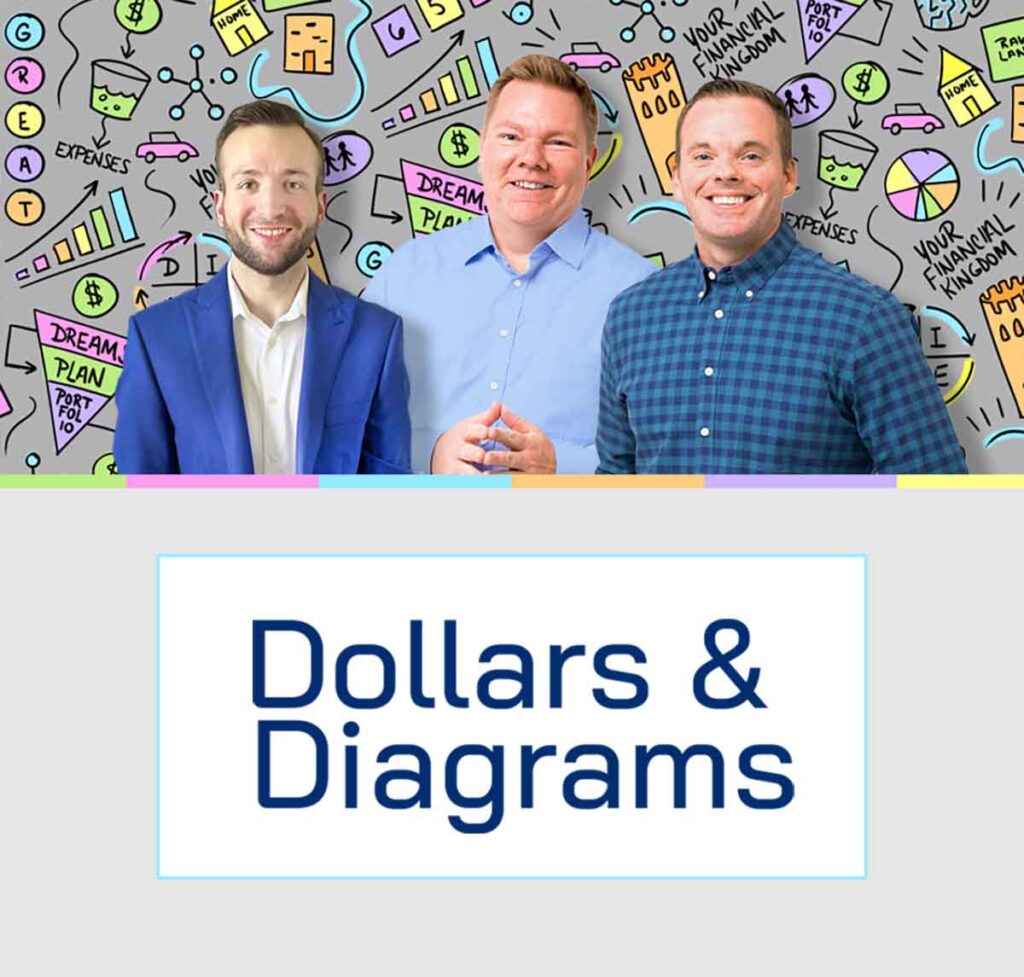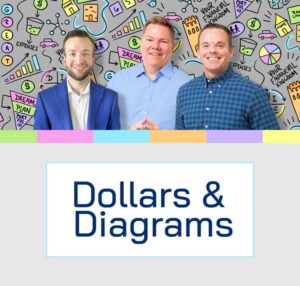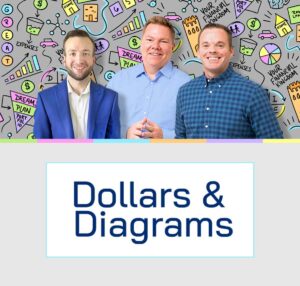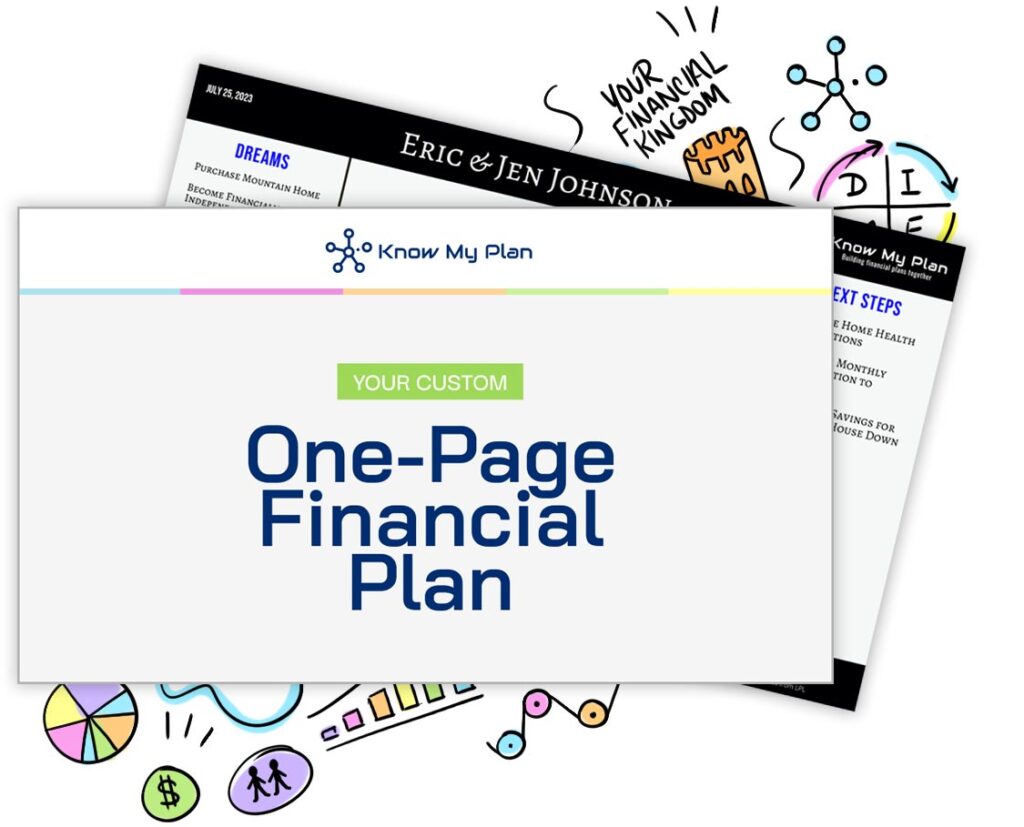10 Do not fall in love with an individual stock. The stock will never love you back.
Individual stocks can be fun. However, they do carry risk. They can certainly create wealth, but also destroy wealth. As a rule of thumb, try not to exceed a 10% allocation to any individual security. Over time, it can be easy to build a large position in a single stock through an employee stock purchase plan, stock options, or restricted stock units. These programs can be great, but you might need to sell some shares from time to time to maintain a diversified portfolio.
Try to avoid having a large concentration of your employer’s stock. Your current income is already 100% allocated to your employer, so be extra careful when it comes to your employer’s stock. You don’t want your income and your portfolio so dependent on a single company. Most of us probably know an individual who has been particularly hurt from this.
An employee who has worked for a company for 40 years – the company begins to crumble – the stock tanks – and then layoffs begin.
It is often common for people to become emotional when inheriting a stock from a loved one. Possibly, the stock always performed extraordinarily well for your parents, grandparents, aunts, or uncles. Ultimately, it should not matter. You need to be (and stay) diversified.
There is no guarantee that a diversified portfolio will enhance overall returns or outperform a non-diversified portfolio. Diversification does not protect against market risk.
9 Know your key number(s) for retirement.
We believe that there are 3 key numbers that you need to know when starting to plan for retirement:
- What year do you want to retire?
- How much income do you need (in today’s dollars) per month?
- What is the portfolio value(s) needed to create monthly income?
The first two numbers are normally easy. The third number is generally the challenge. Start with your monthly income need and then subtract out expected Social Security and Pension payments.
For example, you would like to have $8,000 per month in retirement when you retire at your full retirement age of 67 years old. You know that your Social Security at your FRA is expected to be $2,500 per month and you expect to receive a pension of $1,500 per month. Therefore, your portfolio needs to generate $4,000 per month (net of taxes).
A popular rule of thumb is that a 4% withdrawal is a safe withdrawal rate for an expected 30-year retirement.
For example, $4,000/mo x 12 months/ yr = $48,000/yr / 4% withdrawal rate = $1,200,000 NET (in today’s dollars).
The key word used here is “NET” meaning NET of taxes. This is a great example in which working with a CERTIFIED FINANCIAL PLANNER™ and potential partnering with a CPA can offer substantial value. Ultimately, you need to calculate what your number is including your expected tax liability or the “GROSS” number. One of the largest variables in retirement income planning is estimating future tax rates that will ultimately impact your future tax liability.
8 Begin (or accelerate) savings towards future health care expenses.
If you are in a high deductible health care plan, you can contribute to a Health Savings Account. A Health Savings Account has substantial advantages:
- Contributions are pre-tax.
- Earnings grow tax deferred.
- Generally, the money can be invested for growth.
- Qualified distributions come out tax free.
Nonqualified withdrawals are taxable as ordinary income and subject to a 20% penalty unless you’re: a) over 65, b) disabled or c) a non-spouse beneficiary who makes a withdrawal after the passing of the original accountholder.
7 Protection: make sure your family is safe IF (1) something catastrophic happens prior to retirement or (2) you experience a major medical event in retirement.
People do not like to think about the worst possible things that could happen to them or their family members. However, we think any good financial plan starts with preparing and planning for worst-case scenarios and then being optimistic for the best.
We believe that there are 3 primary Risk Protection strategies that you must evaluate in your financial plan:
- Life Insurance
- Disability Insurance
- Long-Term Care
There are many ways to evaluate how much (if any) life insurance you need. You may WANT more, but we think you should calculate what you need.
For example, let’s assume you are 47 years old and hope to retire at 67. You have already calculated that your “GROSS” number for retirement is $2 million, and you have saved $500,000. Next you would add in current debts or expected future liabilities. You owe $300,000 on a mortgage and have unfunded future liability for college education costs of $100,000.
How much life insurance do you need?
$2,000,000 needed for retirement – $500,000 currently saved + $300,000 Mortgage Debt + $100,000 College Costs = $1,900,000
This is just one of many ways to calculate life insurance needed. You can go through a similar process to calculate both Disability Insurance & Long-Term Care.
Guarantees are based on the claims paying ability of the issuing company. For personal advice you should consult an insurance professional. You may also visit your state’s insurance department for more information
6 Get estate planning documents in place.
Another popular feel good topic. It is not an enviable task to think about what happens if you or your spouse passes away or is unable to make choices. A good estate planning attorney can help streamline the process and make it as painless as possible.
Most popular documents:
- Power of Attorney
- Medical Directives
- Will &/or Trust
- POA for Children (18)
NOTE: We have included getting a power of attorney for your children. Once your child reaches the age of majority (18 or 21), you might no longer be able to get information in the case of a major medical event. Plan ahead and get the power of attorney for your child and hope that you never need it.
5 Tax Diversification
Probably the most demanding financial planning challenge that we face in working with prospects is the lack of tax diversification between their investment vehicles.
Let’s assume you have done an amazing job of saving but are preparing for retirement with 100% of your retirement assets in your company’s 401k/ 403b or a Traditional IRA. In retirement, those distributions are taxed as Ordinary Income. This could work out just fine. However, what if tax rates go up substantially over time? Tax rates are probably the largest variable in retirement income planning.
Let’s assume you have a $1,000,000 from which you withdraw 4% ($40,000) per year, and you pay an effective 20% tax rate (state and federal). You would net $32,000 per year. If the tax rate spikes to 40%, you would net $24,000 per year or 25% less net income.
We would encourage you to look at your workplace retirement plans and see if you have Roth or After-Tax plan options. These options would allow you to pay taxes today (at today’s current tax rates) and let the funds grow tax deferred. If you follow IRS guidelines, distributions in retirement could be tax free. We recommend creating a Roth-like option to hedge against higher tax rates in retirement.
In addition, you could also potentially contribute to a Roth IRA (depending upon your income). Finally, you can always evaluate a back-door Roth IRA where you can contribute to a non-deductible IRA and then convert those funds to a Roth IRA in the future. We would encourage you to partner with a CERTIFIED FINANCIAL PLANNER™ and a CPA before facilitating the back-door conversion.
Finally, you can contribute to a non-qualified account. You would get a 1099 on an annual basis for any interest, dividends, or capital gains. However, in many instances there are favorable tax treatments available in non-qualified accounts.
The Roth IRA offers tax deferral on any earnings in the account. Withdrawals from the account may be tax free, as long as they are considered qualified. Limitations and restrictions may apply. Withdrawals prior to age 59 ½ or prior to the account being opened for 5 years, whichever is later, may result in a 10% IRS penalty tax. Future tax laws can change at any time and may impact the benefits of Roth IRAs. Their tax treatment may change.
Traditional IRA account owners should consider the tax ramifications, age and income restrictions in regards to executing a conversion from a Traditional IRA to a Roth IRA. The converted amount is generally subject to income taxation.
4 Prepare for inflation
Another frequent mistake we see when working with prospects is that they have prepared for inflation and have greatly underestimated their actuary-based life expectancy.
Using baseline inflation of 3%, a dollar today has the same purchasing power as $2.43 in 30 years. That means that your $4 box of cereal might cost $9.71 in 30 years. We have to have a plan in place that strives to grow your income by at least the cost of inflation, so you do not lose purchasing power in retirement.
- 30-year retirement $4 cereal turns into $9 cereal
3 Emergency Fund
We tend to think that it is advisable to have six months of income set aside in a savings account. Safety and liquidity are the most important purposes of these funds.
For example, if your monthly expenses are $8,000 per month, we would encourage you to have an emergency fund of $48,000.
When you enter retirement, we believe that your allocation should probably contain at least five years’ worth of fixed income holdings (cash, savings, CD’s, fixed annuities, bonds, etc.). If you need your portfolio to generate $4,000 per month, we encourage you to have $240,000 in your fixed income allocation ($4,000 per month x 12 months/ year * 5 years).
If you have five years’ worth of fixed income allocation, we feel it is very probable that you would not have to sell your equity allocation at a loss. Equities can be highly unpredictable in the short-term, but over longer period of times have historically generated positive returns (past performance is not indicative of future performance). Between 1950 and 2019, the worst 1 year return for the S&P 500 was -39% (2008), but the worst 20 year rolling return for the S&P 500 was +6% annually.
All performance referenced is historical and is no guarantee of future results. All indices are unmanaged and may not be invested into directly.
2 Take advantage of charitable contributions during your peak earning years
If you are charitably inclined and in your peak earning years, you might want to look at using a Donor Advised Fund to super-charge the tax deductibility of your charitable contributions.
- Cash Donations – You are generally eligible for an income tax deduction up to 60% of your adjusted gross income.
- Long Term Appreciated Assets – You are generally eligible for an income tax deduction up to 30% of your adjusted gross income. In addition, this eliminates long-term capital gains taxes if the asset has been owned for at least a year.
For example, maybe you were gifted a stock that does not have cost basis that has grown substantially. It becomes challenging to sell this position. However, funding a Donor Advised Fund with this highly appreciated position could lock in a substantial tax deduction. The funds would grow tax free and you maintain control over the disposition of the funds.
1 Find the right team of CERTIFIED FINANCIAL PLANNER™s who realize they are NOT the smartest wizards.
Research on investment selection is everywhere today. For the most part, asset management has become commoditized. From time to time, prospects might say to me, “I can pick my own investments.” Most of the time, they are absolutely right.
So why would I want to work with a team of CERTIFIED FINANCIAL PLANNER™s?
Using history as our guide, at some point in the future, you will be tempted to sell your equity investments in a bear market. We highlight a 20-year period (1999-2019) where a diversified 60% Stock /40% Fixed Income portfolio generated a 5.6% rate of return. However, the “average” investor generated a return of only 1.9%. The difference between the two numbers is often referred to as the “behavioral gap.”
Our job as a team of CERTIFIED FINANCIAL PLANNER’s is to keep you from making the big mistake. We believe that about 20% of our job is implementing the actual financial plan. The other 80% is behavioral management to encourage you to stay on track in good times and in bad.
Finally, we have mentioned the word team several times. We think it is important not to enter into a situation in which you are working with an individual CERTIFIED FINANCIAL PLANNER™. Unfortunately, CFP®s are not immune to life events (death, retirement, disability). You do not want your entire financial plan dependent upon one individual. No matter how great. This is just another level of diversification. We encourage you to find one team (just to be crystal clear – the team needs to be partnered together at the same firm) that you can work with to implement and to monitor your plan.
Source:
Information in this material is for general information only and not intended as investment, tax or legal advice. Please consult the appropriate professionals for specific information regarding your individual situation prior to making any financial decision. No strategy assures success or protects against loss. Investing involves risk including loss of principal.
Securities offered through LPL Financial, member FINRA & SIPC. Investment advice offered through Independent Advisor Alliance, a registered investment advisor. Independent Advisor Alliance and Know My Plan are separate entities from LPL Financial.




